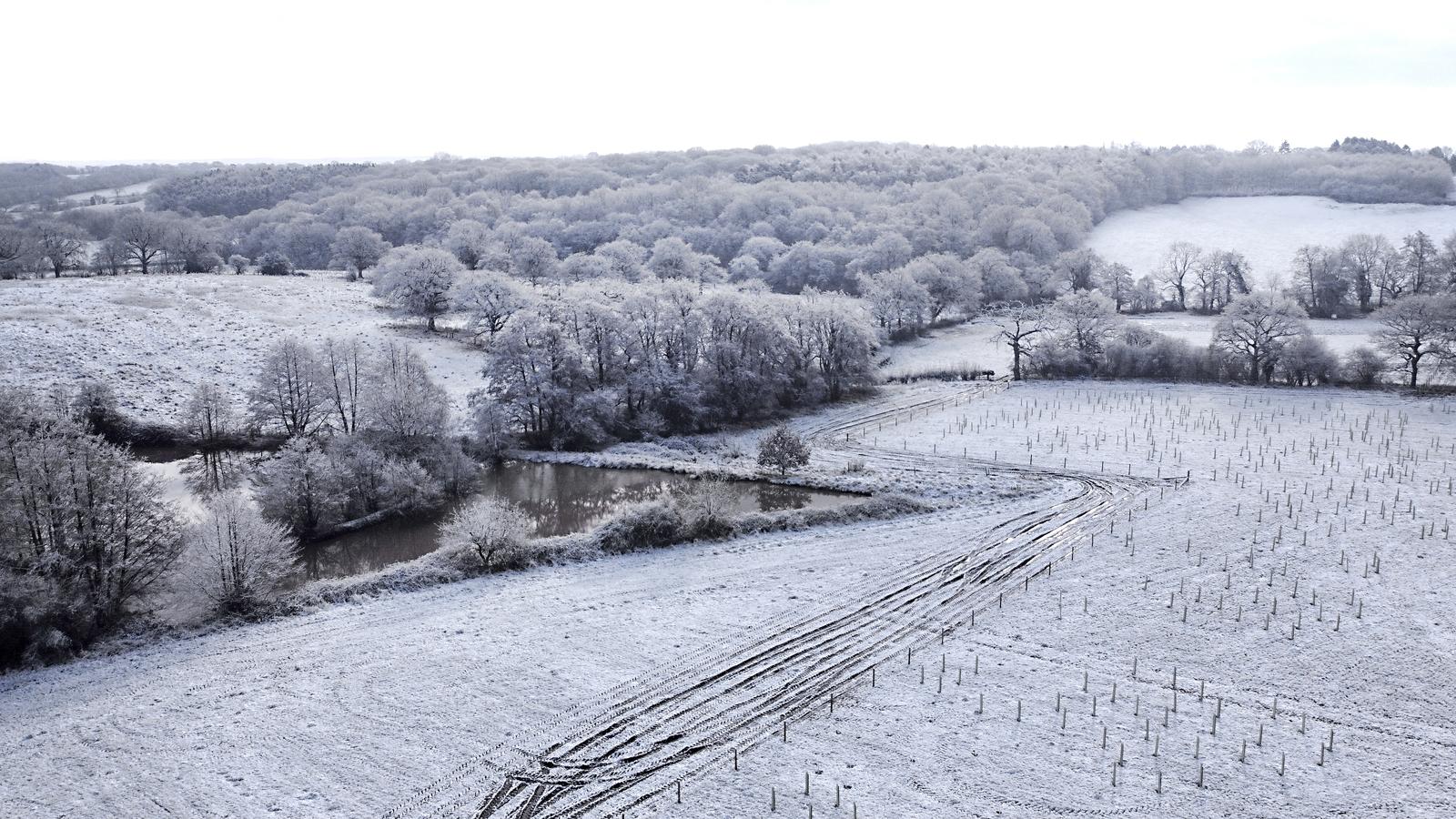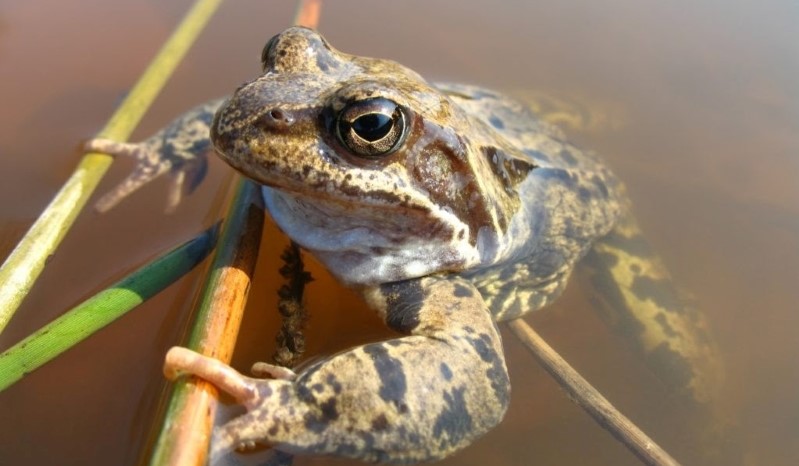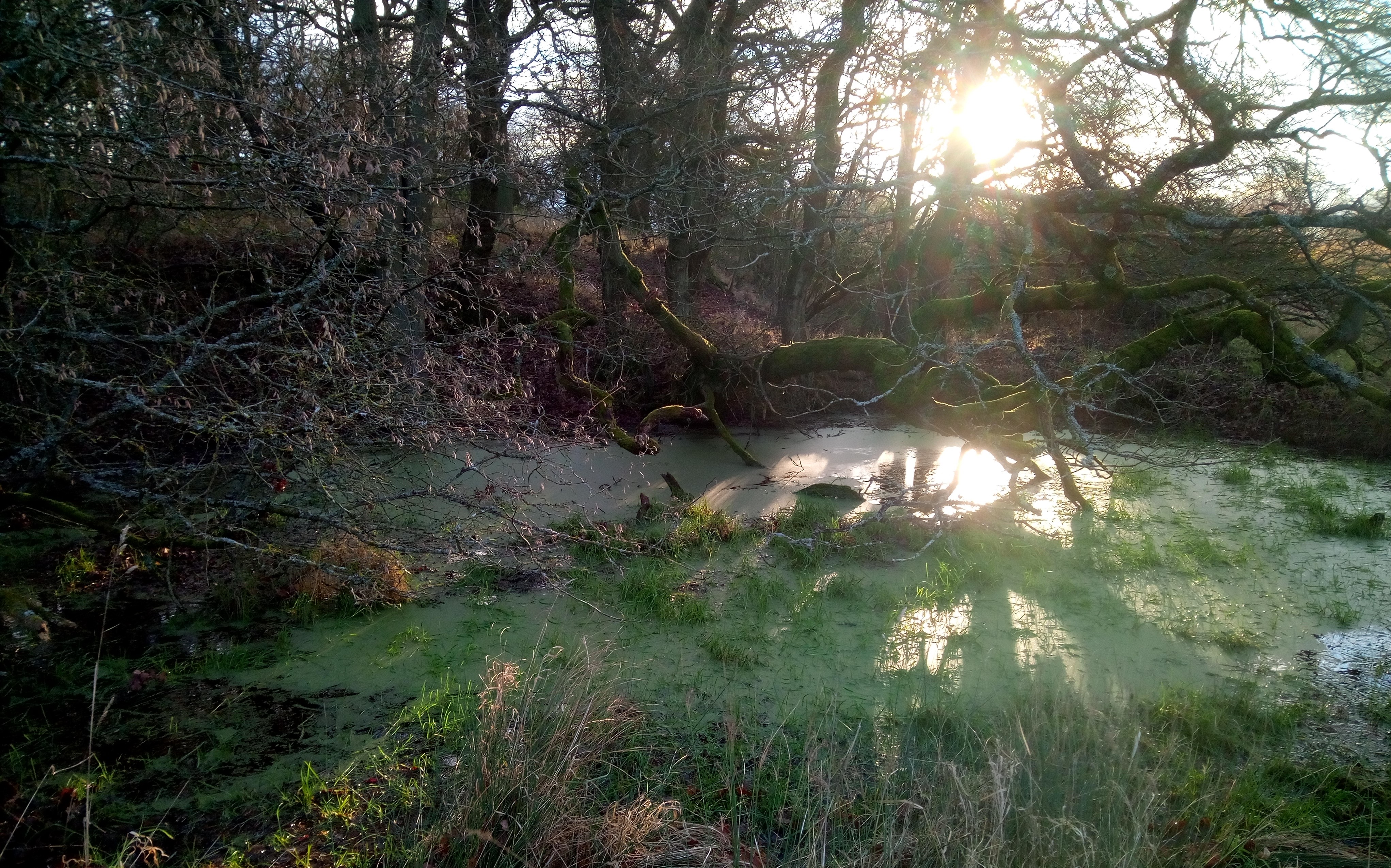Wetland habitat in the Forest
World Wetlands Day on 2nd February raises global awareness about the importance of wetlands for people and our planet. The mosaic of habitats found within the Heart of England Forest increases the diversity of plants and animals, with wetlands providing some of the most biodiverse habitats in the Forest. With work now completed on the creation of new wetland habitat at Oak Wood, Imogen, our Biodiversity Officer, explains what is involved in this exciting project and why wetlands are so important for wildlife.

Creating a variety of habitats in the Forest
The Forest currently covers 7,000 acres, of which 4,000 acres is new woodland and 600 acres is beautiful, mature, and ancient woodland. Other areas of our land holdings are left unplanted by trees to allow other habitats to take hold. These include grassland, wetland, and woodland rides. In a fully natural and functioning ecosystem, some of these can develop naturally through what we call “ecological succession” over time. For example, diverse grasslands can form through the natural roaming of grazing herbivores, moved on by predators.
In semi-natural habitats such as in the UK, however, many habitats benefit from more active restoration to get started. Oak Wood, a 90 acre site acquired recently in Warwickshire, presented great opportunities for creating essential wetland habitat. During the autumn of 2020, we worked with wetland consultants and local contractors, with a funding contribution from the Environment Agency, to create new wetland areas at this site.
What benefits do functioning wetlands have?
At the southern boundary of Oak Wood, an unnamed tributary of the River Alne flows through the site. This is naturally quite gravelly, with woody debris, natural dams, and the beginnings of new channels cutting into the banks.
These natural features and branching were used as a baseline to create more channels within the tributary and a series of four ponds. Several historic land drains and a drainage ditch were also blocked up to direct water flow into the new wetland.
This will have the following benefits:
- Trapping and filtering sediments, and so improving the water quality in the tributary
- Improving this area of the site for wetland wildlife and plant species
- Acting as a small area of temporary flood storage, holding water back in the catchment for longer, and alleviating flood risk downstream.
Wetland function – improving water quality
Many former wetlands have been lost due to a variety of factors, including widespread drainage of land for agriculture, urbanisation and development, and abstraction. This combination of factors means that many river systems are missing important buffer features that filter diffuse pollution and remove nutrients and sediment from drainage waters.
In the case of the works at Oak Wood, the creation of new temporary ponds will trap and filter run-off from the rest of the site, acting as a buffer between the land and the Alne catchment. The same goes for debris that becomes lodged in the stream – this will trap and filter sediments and nutrient run-off over time, improving water quality and decreasing the speed of flow, which in turn alleviates flood risk downstream.

A home for wildlife
Wetlands are hugely important for biodiversity, and we have sadly lost over 90% of them in the UK in the last 100 years. In the UK they make up 3% of land but hold 10% of our biodiversity. The good news is that newly restored wetlands do not take long to recover and recolonise with both plant and animal life, and even within a year we can expect to see big changes in the types of species found in the pools at Oak Wood.
Within 1-2 years the ponds will rapidly colonise with aquatic plant species, frogspawn and breeding dragonflies, and the new gravelly deposits in the stream will provide more suitable fish spawning habitat.
In the absence of natural grazing herbivores, management of pond edge habitat through either grazing or mowing is then often used to maintain a mosaic of different vegetation heights and structures. This keeps the habitat suitable for various species. As with any habitat, a variety of microhabitats is key to maintaining biodiversity.
Research has shown that creating wet features provides very important feeding areas for wading birds such as lapwing and curlew, as well as other declining British birds such as tree sparrow and yellow wagtail.
Slowing the Flow
Although this is a relatively small area of wetland, the new features will be helping to hold more water on the land for longer, through diverting it through more bendy channels, storing rain and drainage water in temporary ponds, and holding more water on the land in general.
On its own, this will only contribute in a very small way to any areas of local flooding, but the greater the patchwork of natural or re-naturalised wetland features in a catchment, the more the system will be functioning as wetlands are should do – filtering water slowly through the land, rather than being drained all at once.

Wonderful wetlands
Here we have covered just a few main reasons why there is so much more to wetlands than meets the eye. In different parts of the world they provide an even greater diversity of ecosystem services, including carbon sequestration, resting grounds for migrating birds, and water/food supplies.
This is in addition to them being wonderfully wild and beautiful places to spend time. Next time you see wetlands when you visit the Forest or your local green space, take a closer look.



